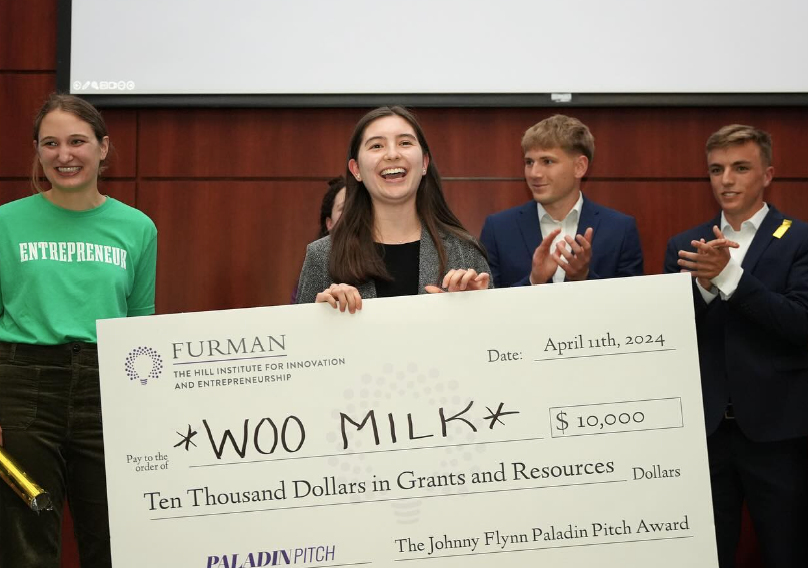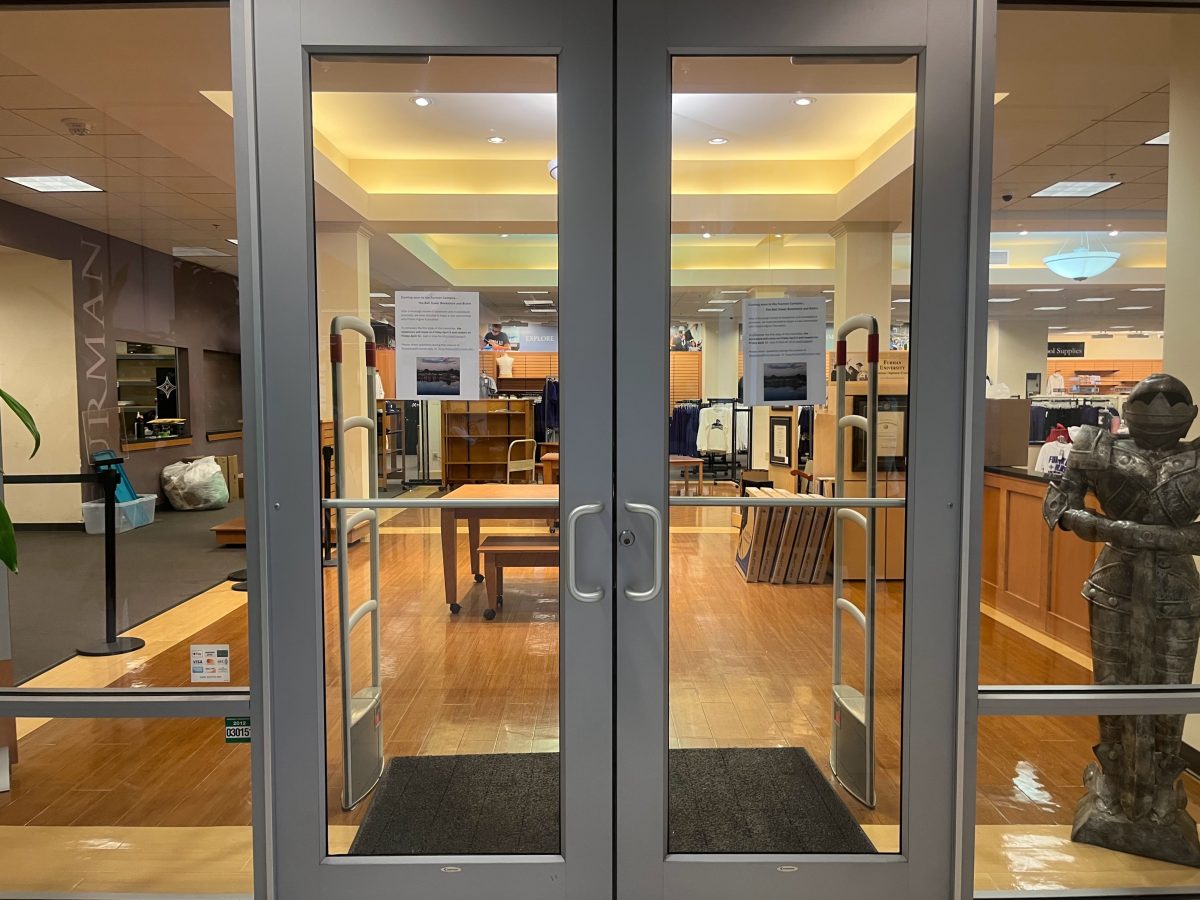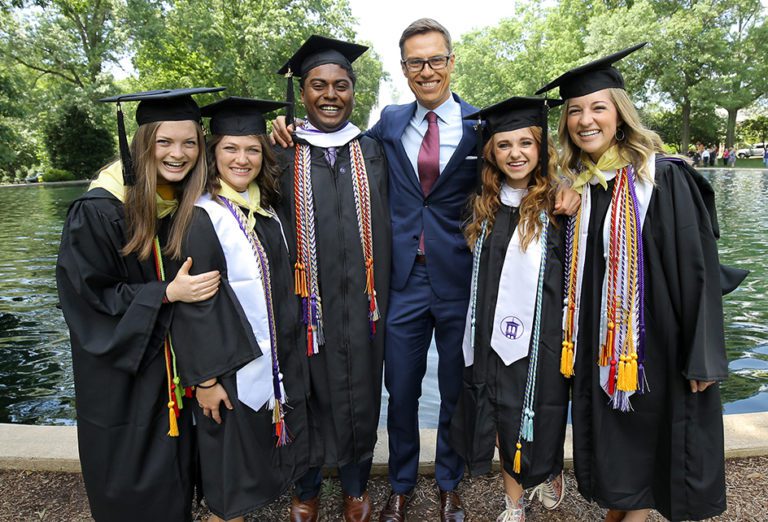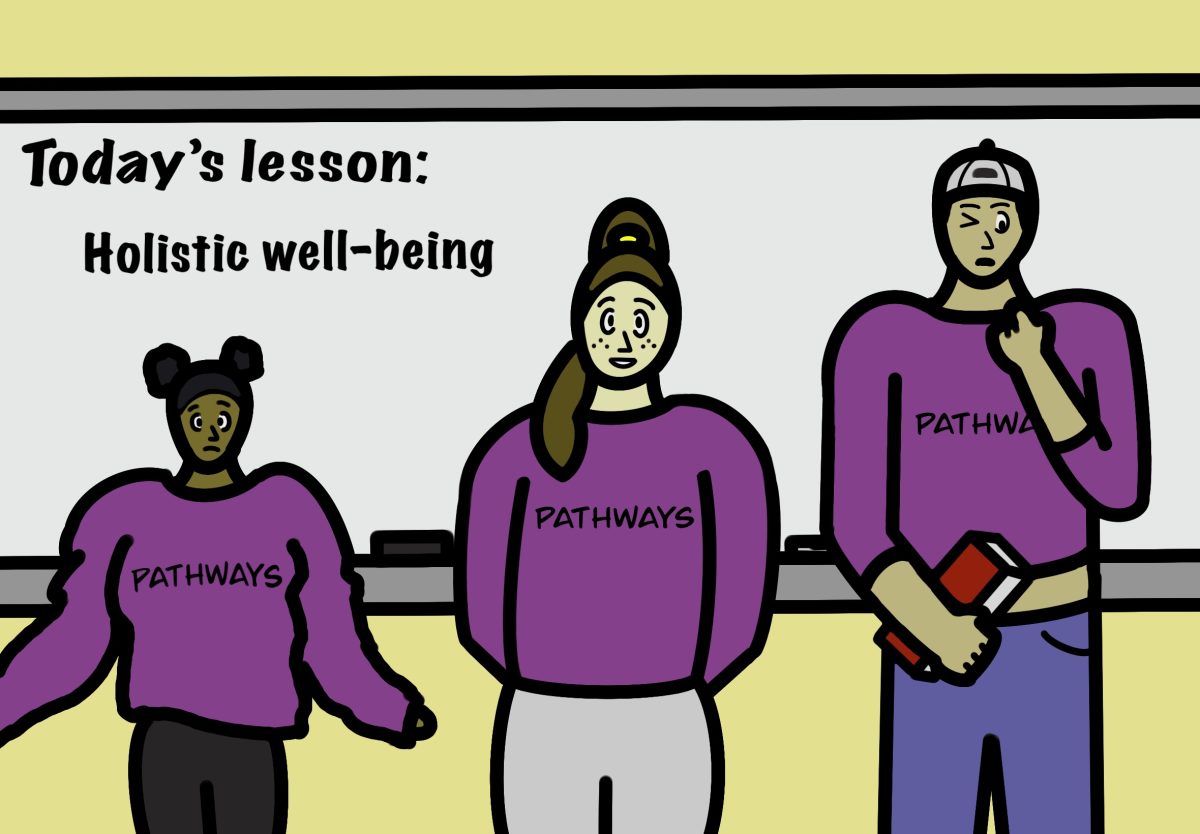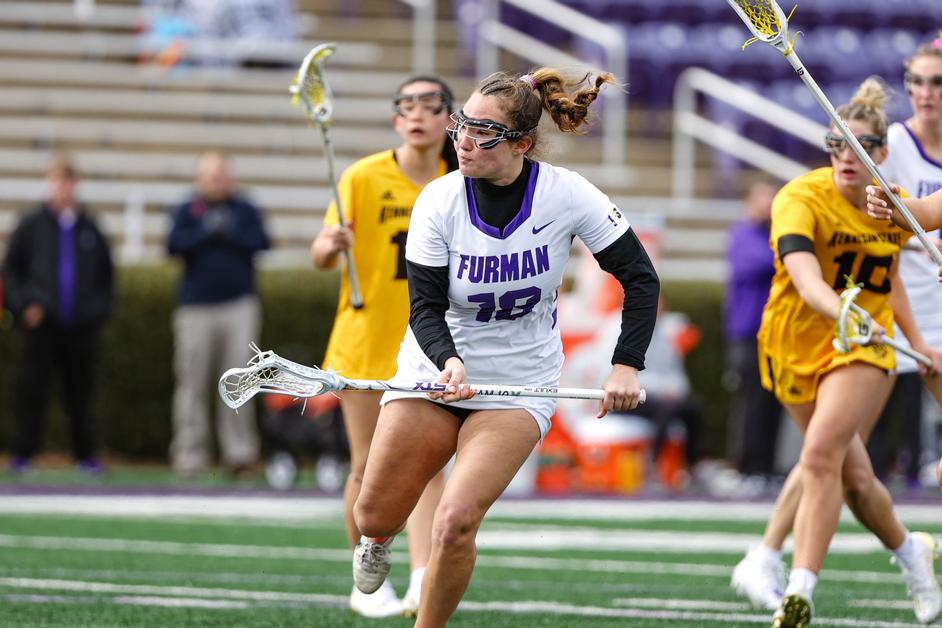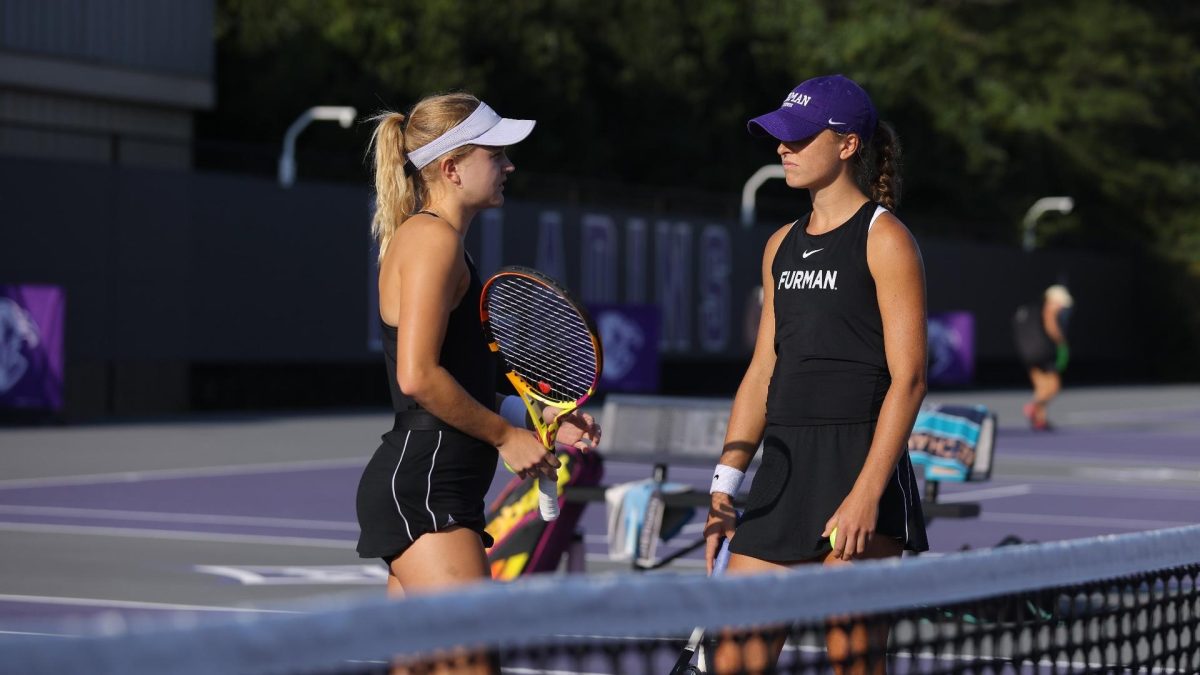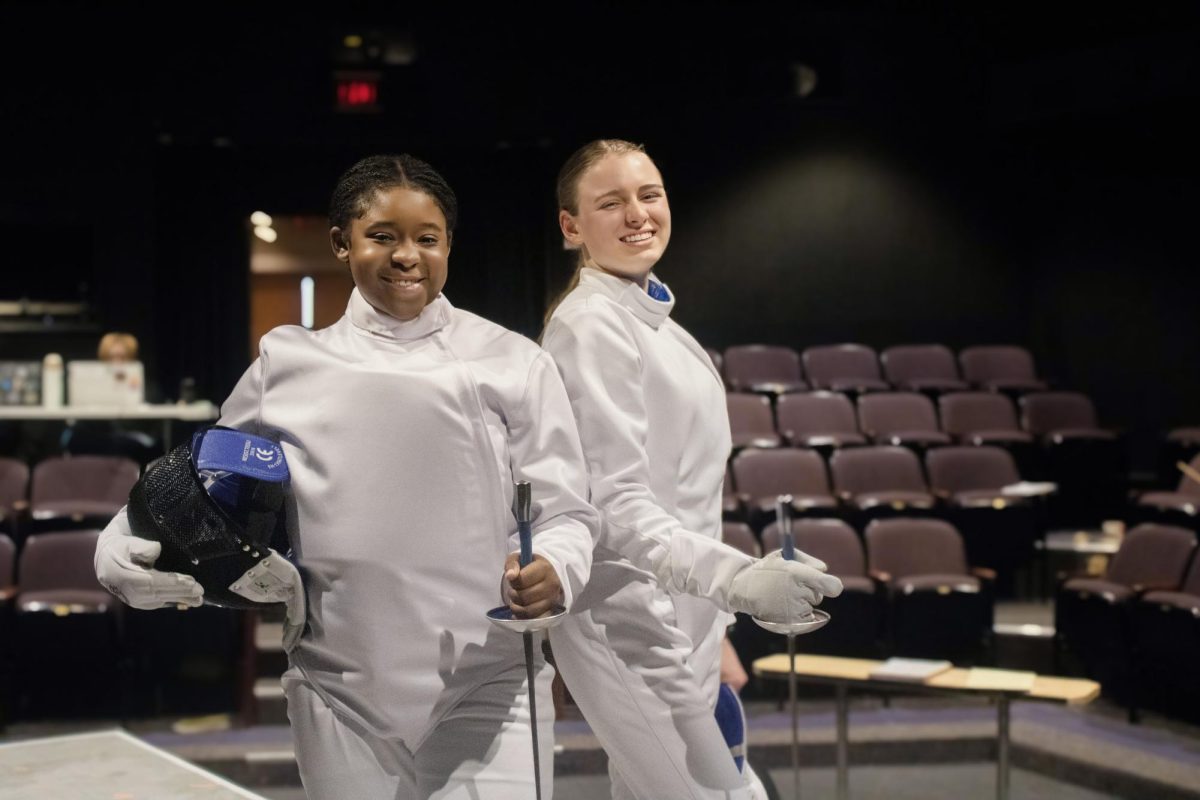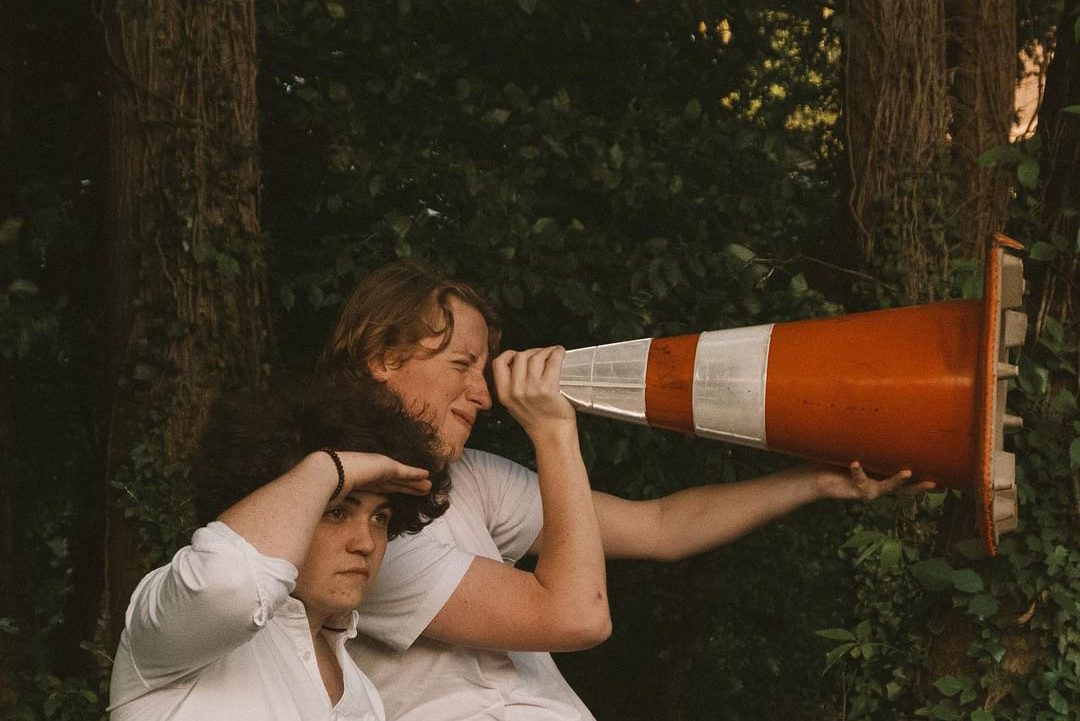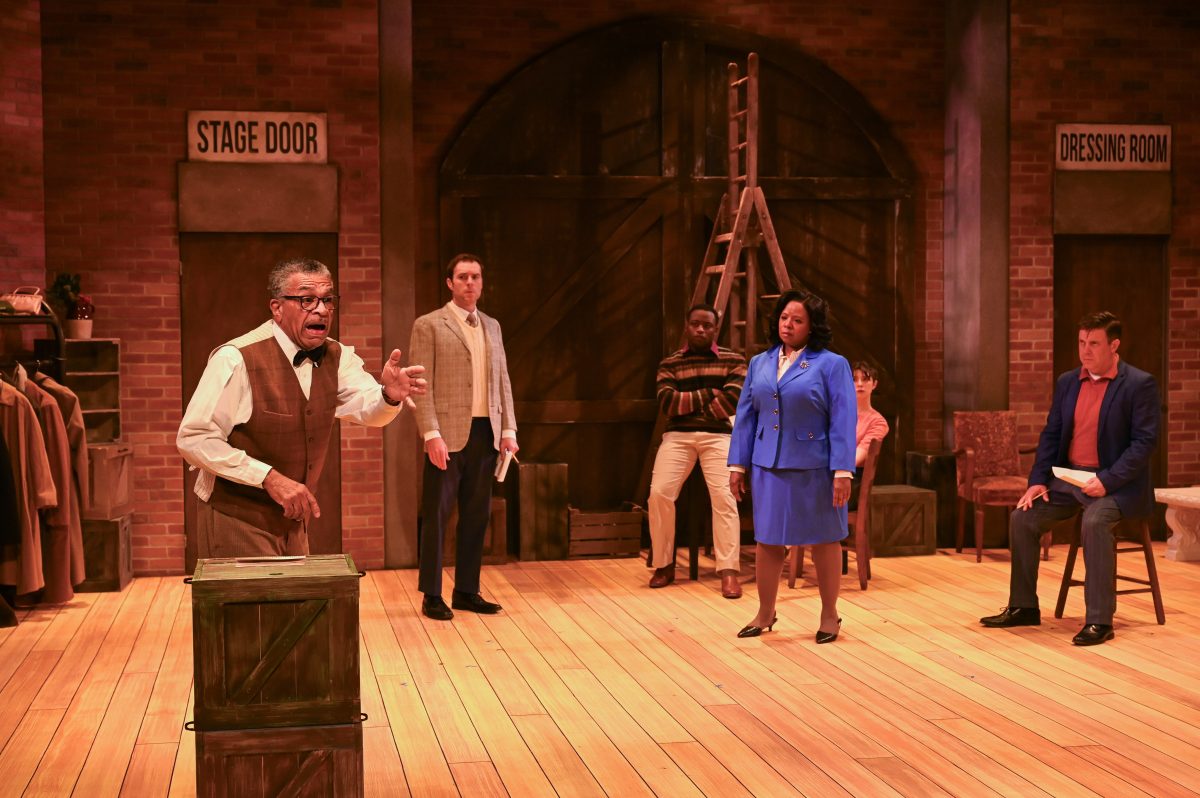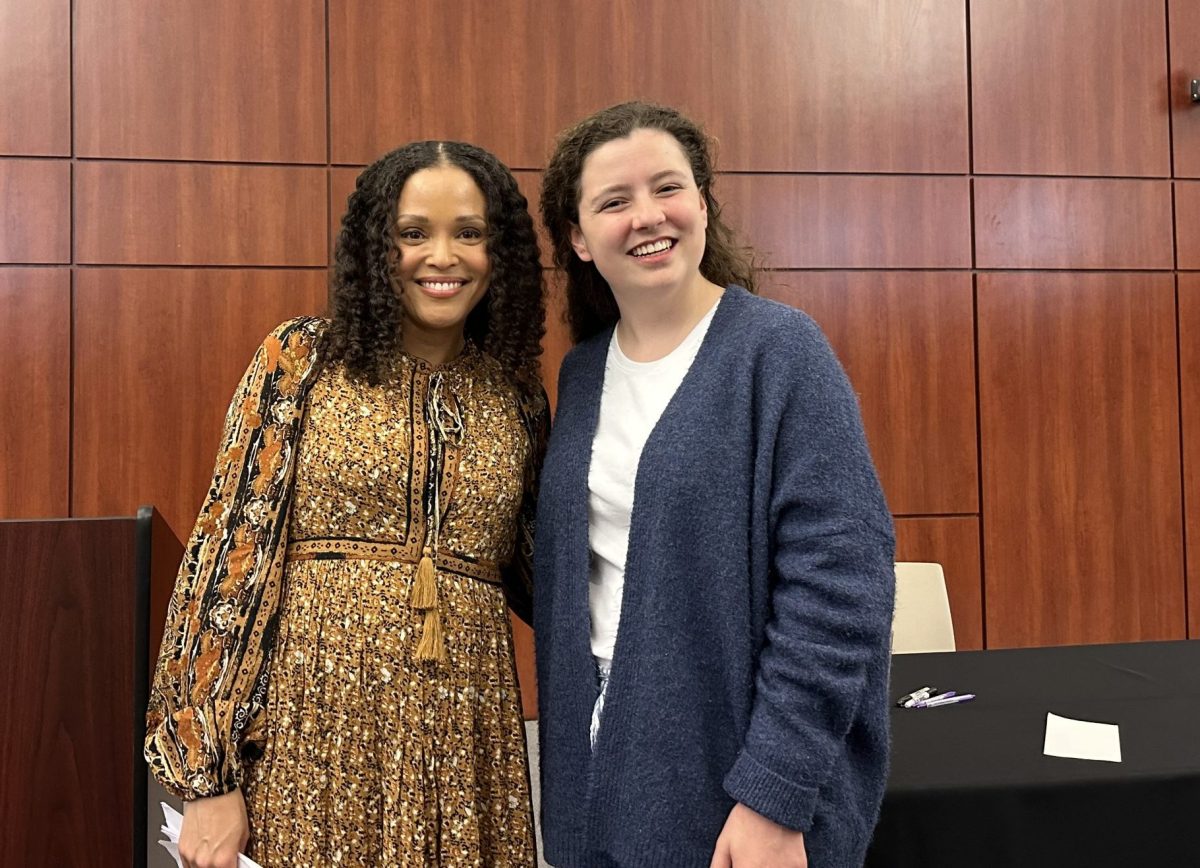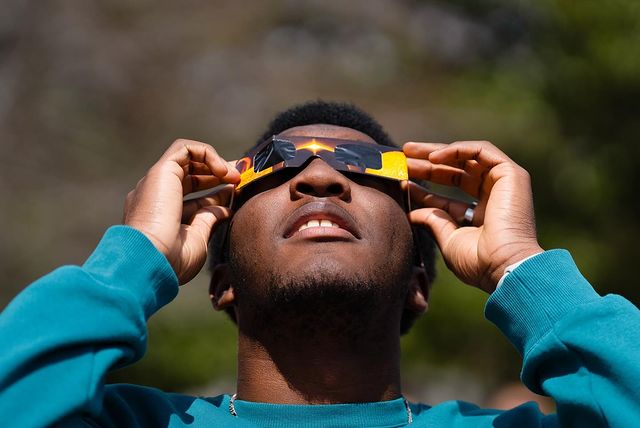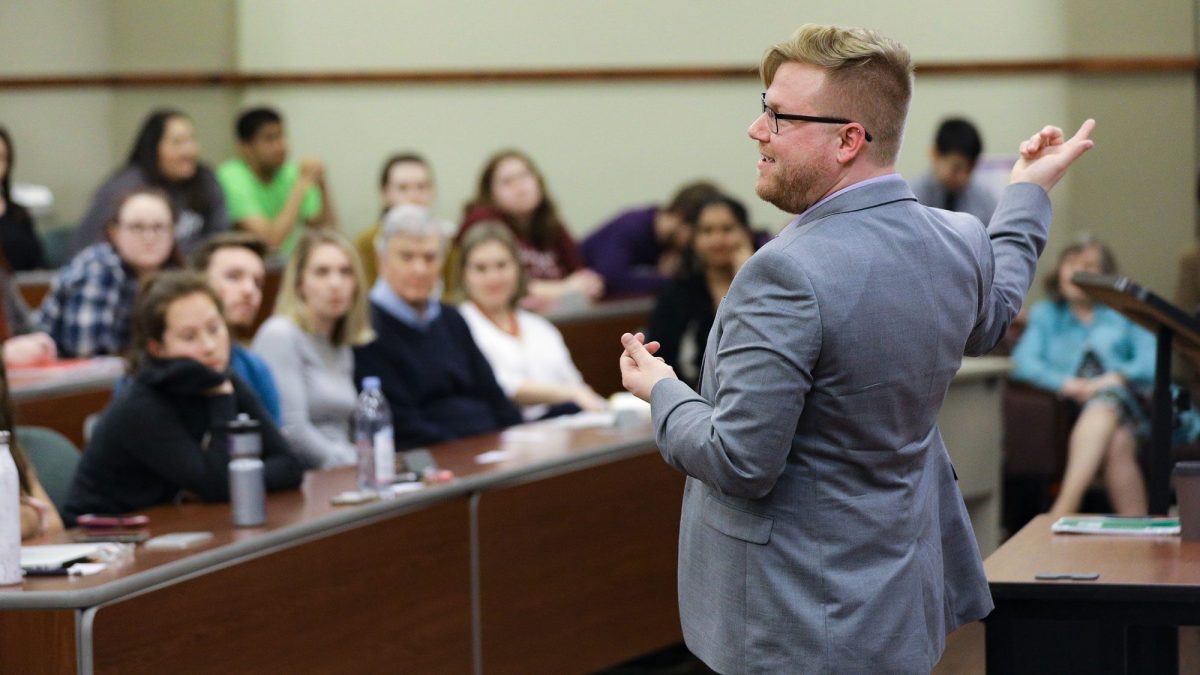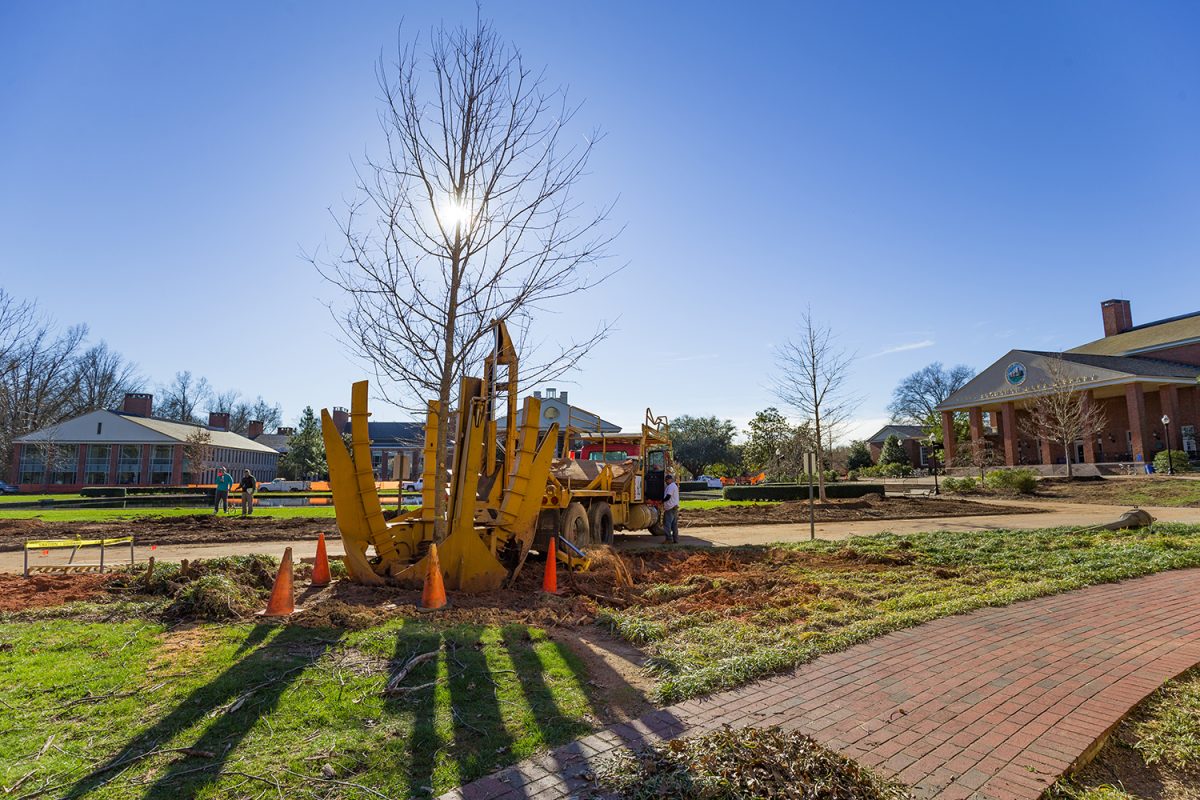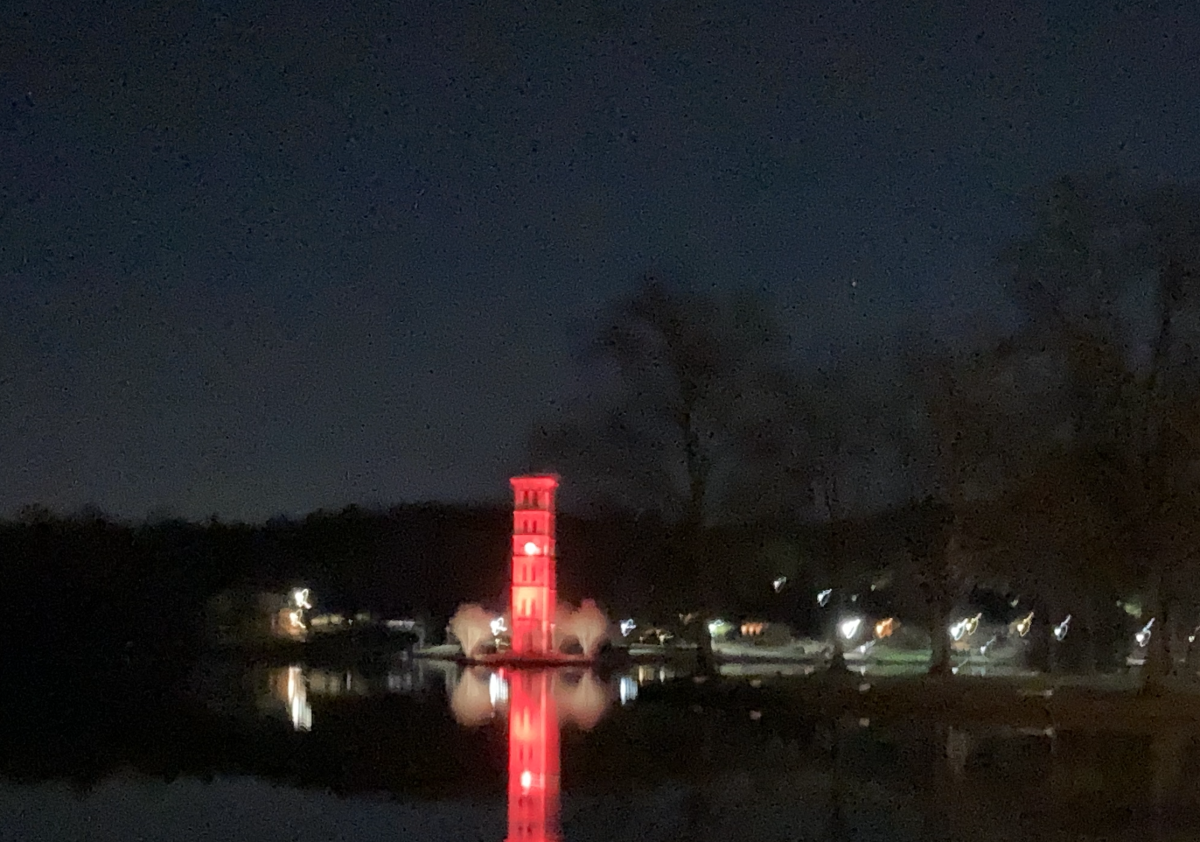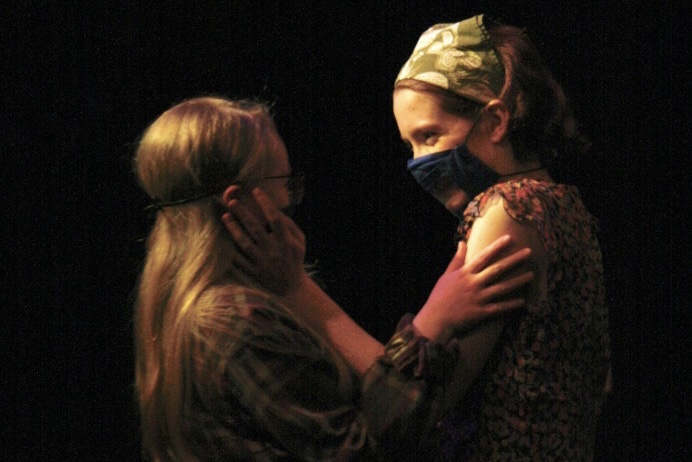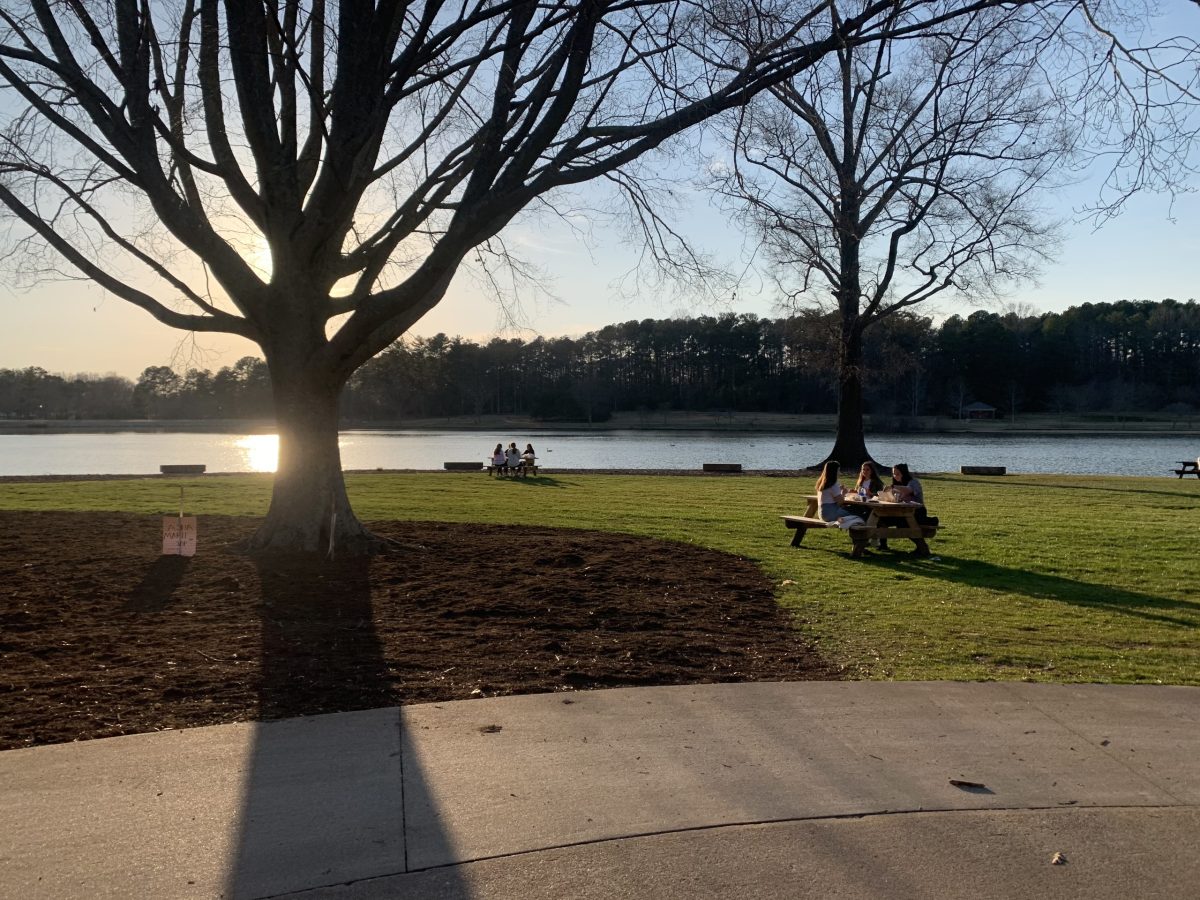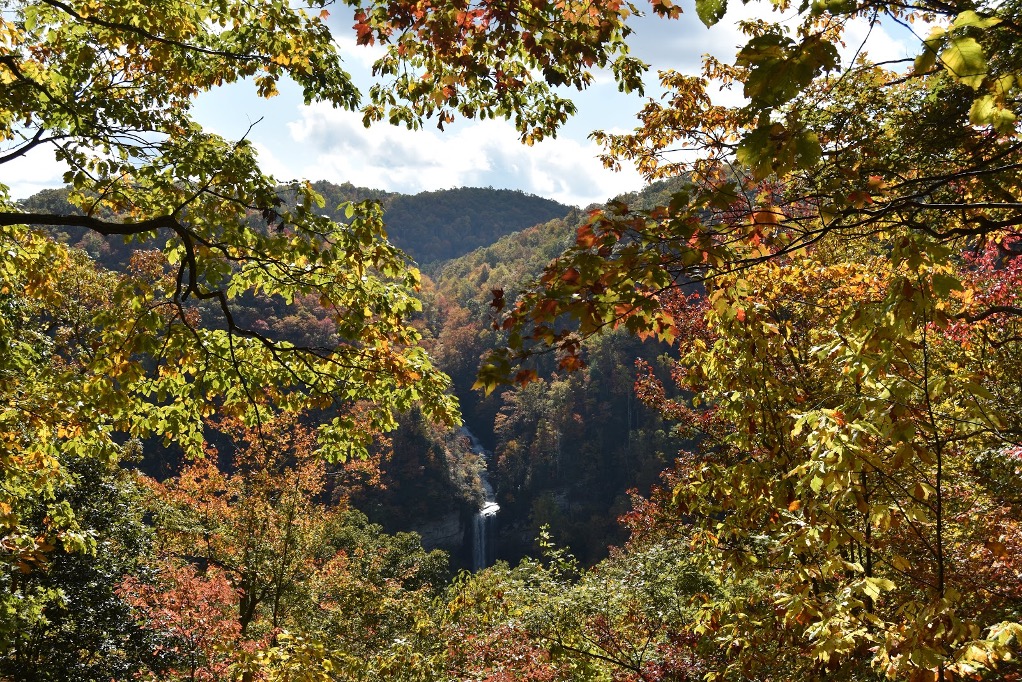On August 28, Furman’s percussion studio released an album featuring two sets of music by composer Mattthew Burtner. Respectively titled “Six Ecoacoustic Quintets” and “Avian Telemetry,” each of these unique compositions portrays a different ecological event, from ice melting to birdsong, with some pieces using very unconventional “instruments” like water, sand and feathers. A huge interdepartmental project, this album was the result of close collaboration between professors of Music, English and Biology as well as percussion ensemble students. Backed by scientific data and layered with Romantic-era poetry, these unique pieces broaden the listener’s concept of what qualifies as music while inviting them to consider the value of the natural world.
Associate professor of percussion Dr. Omar Carmenates offered deeper insight on the project. Carmenates has been in collaboration with composer Matthew Burtner since 2011, when he was featured in the Nief Norf Summer Festival, a contemporary music festival that Carmenates hosted here on campus. He described first hearing a live performance of Burtner’s music as “unlike anything I had ever seen or heard before.” Carmenates added that seeing the performance reveals the unique techniques that Burtner uses to create sound, like rubbing the surface of a bowl filled with sand and small microphones, and what Carmenates calls “playing” water. He cites this performance as the beginning of his fascination with Burtner’s music.
In 2015, Carmenates and the Furman Percussion Ensemble worked more closely with Burtner to record “Six Ecoacoustic Quintets,” which comprises the first half of the album. Carmenates traces the conception of the second half of the album to a conversation between himself, Dr. John Quinn (Biology) and Dr. Michele Spietz (English) that took place at an Affiliate Faculty meeting at the Shi Institute a few years later. “One of us…threw out the idea of finding ways for all of our intersecting interests in sustainability and the environment to coexist.” This led them to commission the second section of the album, “Avian Telemetry,” from Burtner. Carmenates finds that “ecoacoustic” is an ideal descriptor for this music. The compositions are based on scientific data – field recordings of birds and spectrographs (charts of wavelengths) of both animal and human sounds. Carmenates revealed that the performers must often translate these graphs into live music as they play. He best surmised this music as “not something that you walk away humming or put on in a typical concert hall” but rather “an experience.” He equates the sensation to that of seeing the Grand Canyon for the first time, describing it as an invitation for each listener to “explore the sounds of nature.”
Professor of Biology Dr. John Quinn also shared how this project provided an opportunity for him to learn from other faculty and students in discovering how they “understood the intersection of sound and ecology.” He described his role in “Avian Telemetry” as an avian and landscape ecologist. He and several of his students conducted research on “how increased human noise affects bird behavior and biodiversity.” The data that resulted from these studies became the basis for the compositions. Quinn stated that while some of the sounds have been altered to evoke certain emotions and portray how humans have impacted natural spaces, some of the performances directly capture the sounds of the birds for which they are named. He cites the tracks “Skylark” and “Landrail” as “literal translation[s],” stating that the percussion instruments emulate the birds in a way that makes one feel as if they are in a field or marsh. Quinn feels that this music seeks to convey the importance of listening to the world around us rather than simply observing it, and calls for understanding of “the impact of global change on the natural world we depend upon.”
English Professor Dr. Michele Speitz brought her area of study to “Avian Telemetry” by working with undergraduate research fellow Beth Fraser (‘20) to identify key Romantic-era poems that feature images and songs of birds and reciting them alongside the music. These poems about birds comprise the spoken word element of the musical composition and inform the percussion rhythms in the piece. Birds are “central” and “celebrated” in these texts, says Speitz, because Romanticism “emphasized humanity’s connections to the natural world.” The works of British poets Percy Shelley, Charlotte Smith and John Clare are featured in these tracks, with each voice offering a different understanding of the relationship between birds and humans. For instance, Speitz says Smith “sings for the bird itself, not just what the bird might mean for humanity,” while Clare’s imperfect syntax mimics birdsong. Speitz finds that this poetry captures both the importance of the birds themselves and human’s reactions to them. She feels that these poets would be “gutted” to see how human activities are threatening the lives of these birds. She noted that these poems were written during the British Industrial Revolution, and that some view this era as the beginning of today’s climate crisis. Speitz feels that combining these texts with the “troubling” data on birdsong in the form of composition serves to inform listeners of the damage that is already being done to the ecosystem and the beauty that will be lost if change is not made.
Senior Percussion Music Education Major Kam JaCoby found Burnter’s use of electronics in this music particularly fascinating. He noted how Burtner manipulated the speed of the audio while also “distorting and rearranging it.” JaCoby played several different instruments throughout the album including vibraphone, marimba, bass drum and guiro. He stated that detail work was essential to the recording process – performers had to make specific choices about the type of mallet they used and even the clothes they wore when recording – and says many takes were needed to make sure each performer was being rhythmically precise. “The rhythmic nature of percussion instruments,” says JaCoby, “plays a huge role in describing the animalistic aspects of the ecosystem.” He found that the pitched percussion instruments were also imperative in portraying the beauty in nature. Senior psychology major Kirsten Baker was also intrigued by how Burtner turned sounds and data from the natural world into music. She was also featured on several different instruments across Avian Telemetry, playing egg shakers, ocarina, vocals, marimba and cabasa. Baker feels that the poetry spoken in the pieces “truly strengthens the role that each instrument plays….and makes each movement easier to interpret,” heightening the sense of connection between humans and nature. Baker found that this project broadens the definition of music, presenting pieces inspired not by human emotion but by “nature itself.”
The combination of environmental activism with the creation of music in this album is a new step for interdisciplinary projects and creations, one that cannot be understated. JaCoby commented that the music assesses how humans are “taking over” the natural world and advocates for increased care for and “coexisting” with the earth. He says that these compositions capture natural beauty that is often taken for granted. Quinn called this album “a novel way to communicate the diversity crisis,” while Carmenates stated that the activism in the piece is present but not overwhelming, inviting deeper thought rather than immediate judgement. Through this unique and engaging collaboration, he says, each listener can find one aspect of the piece that moves them. This connection, Speitz hopes, will inspire more awareness of the beauty that is present and “what we stand to lose.” From features in Biology, English, Music, and more, the creation of this album speaks to the importance of collaboration in the process of change for our current cultures and our future world.
PARMA Recordings’ LiveStage platform will be hosting a professionally filmed performance of Avian Telemetry on Oct. 23, which will also be available on the Furman University Music YouTube channel.


